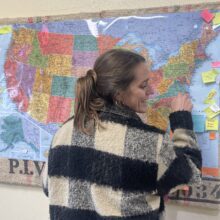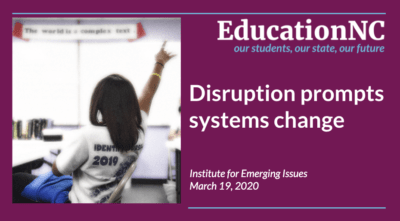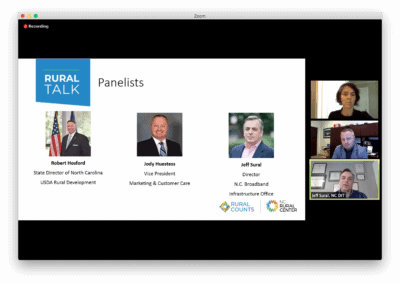How do you get Wi-Fi to students when they aren’t in a school building? How much does it cost? How long does it take to set up? We asked all those questions and more to Angie Henry, Chief Operating Officer, and Candace Salmon-Hosey, executive director of technology services at Guilford County Schools (GCS). On May 19, they deployed 10 school buses equipped with Kajeet SmartBus solutions bringing internet to students, and soon they will send out 34 more.
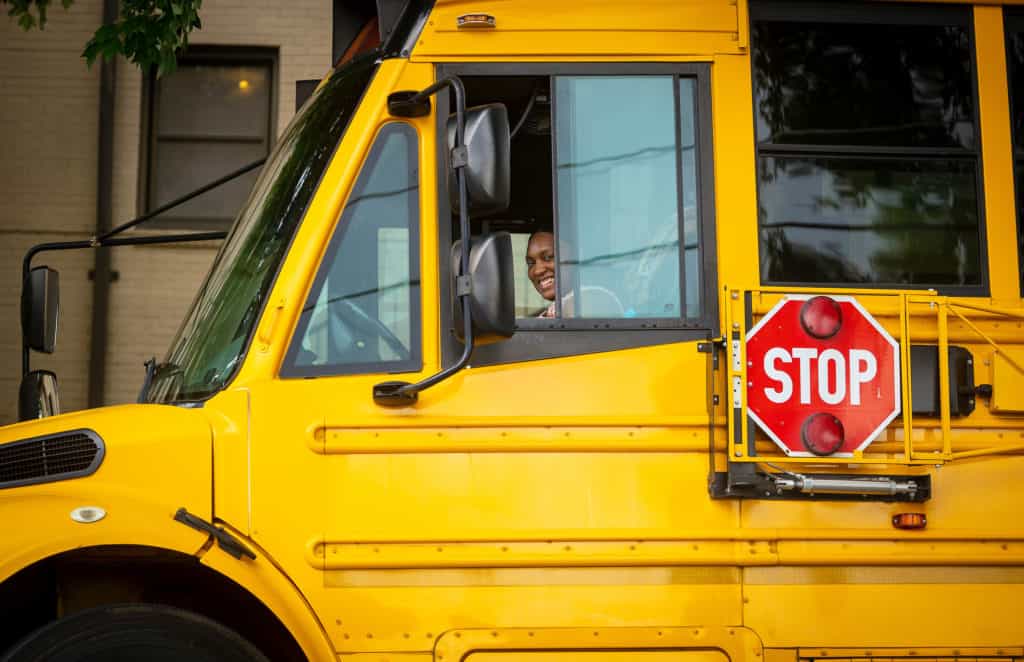
GCS has more than 70,000 students spread across a 650 square mile county. Around 65% of those students are considered economically disadvantaged according to the district. Internet access and devices are not available to all, so when school buildings closed on March 16, GCS began tackling the connectivity gap.
GCS is not a one-to-one school district, meaning they do not supply each student with a device to receive online instruction. So the first hurdle to clear was getting devices in the hands of students. With the assistance of the Guilford Education Alliance, they have been able to distribute approximately 16,714 devices since March.
In choosing which Wi-Fi company to employ, time and accessibility were key. They decided on Kajeet because it works with around nine different carriers, and signal strength can vary in the large county. Another major factor was wait time; Kajeet devices could get to the school quicker than other companies they were looking into. Installation was easy, and the staff was able to troubleshoot from there.
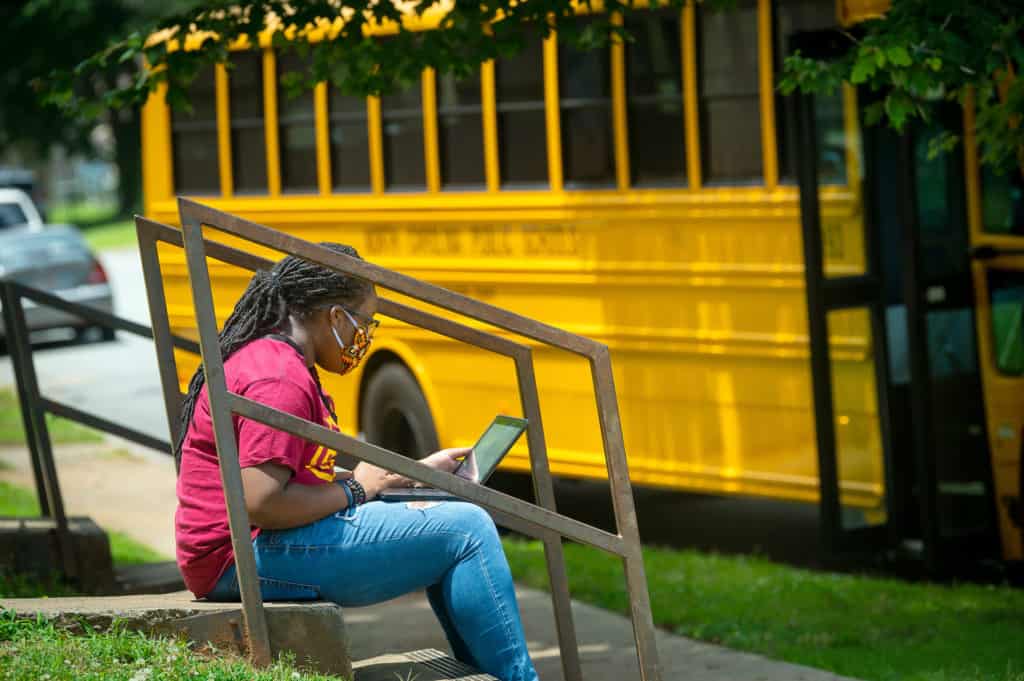
In total, the school purchased 40 Kajeet SmartBus solutions and received four additional AT&T Wi-Fi Rangers, which were supplied by the Department of Public Instruction. The district also increased its number of external hot spots planted at schools to 19. To find internet access in the county, check out this map.
Initially, 10 buses were running a route to eight different locations and staying for three hour sessions before moving to another area. GCS worked with the housing authority of both Greensboro and High Point to identify which complexes had the most students with known broadband access issues. When troubleshooting, GCS found one bus was not covering enough ground, so they adjusted and deployed two buses to some areas.
Each Wi-Fi device can hold approximately 65 simultaneous connections within approximately a 300-foot radius. GCS predicts it costs about $1,000 per bus per year to maintain connection. This amount doesn’t include the salary of the bus driver or gas.
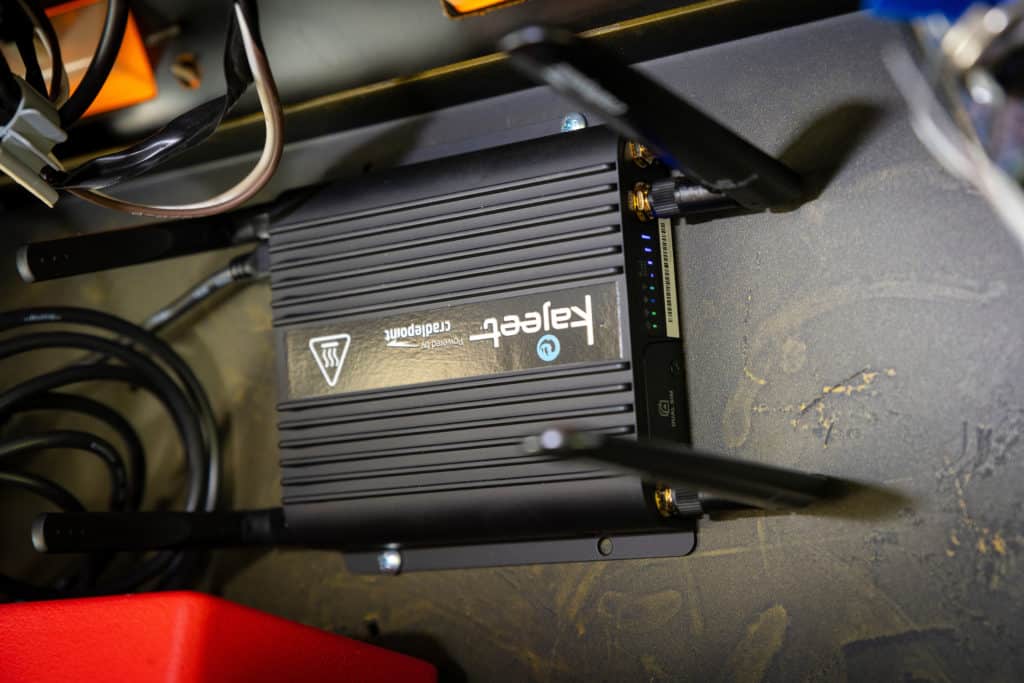
School officially ended June 5, however the SmartBus route schedule remained the same, as some seniors were still using the Wi-Fi for credit recovery. The schedule may adjust for summer learning.
One silver lining of COVID-19 is the idea of keeping Wi-Fi on the buses, Henry said. “When we get back to whatever normal school looks like, we have students who are on buses for an extended period of time getting from one side of the county to the other to get to a magnet program or some other specialized program.” Henry is excited about the idea of affording access to students while they’re in transit to do homework and finish projects.
“I’m excited that this will provide additional opportunities for students to be connected in times where they normally aren’t.”
However, both Henry and Salmon-Hosey agree that this is an intervention, not a solution. The solution, they say, is universal access to broadband.

